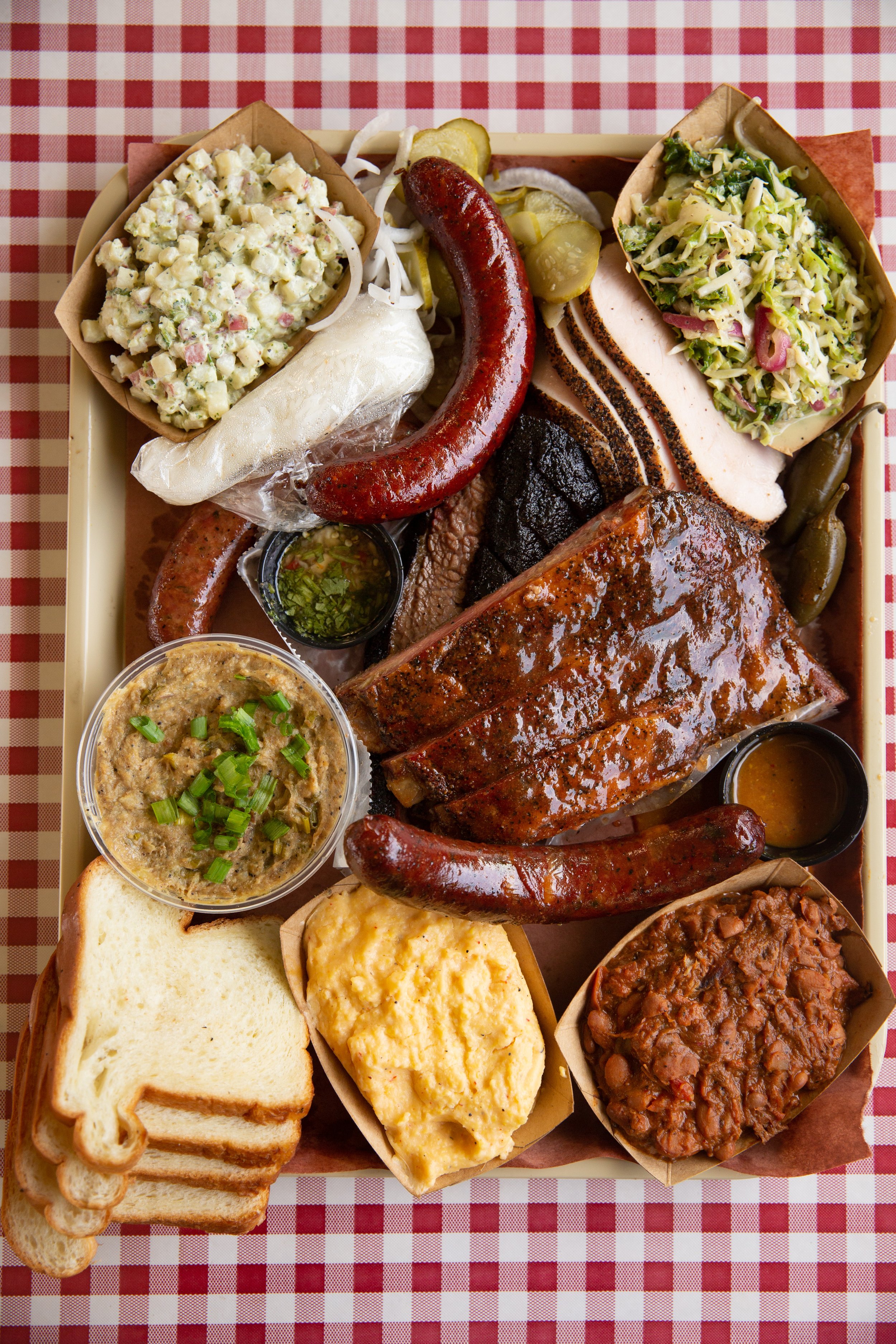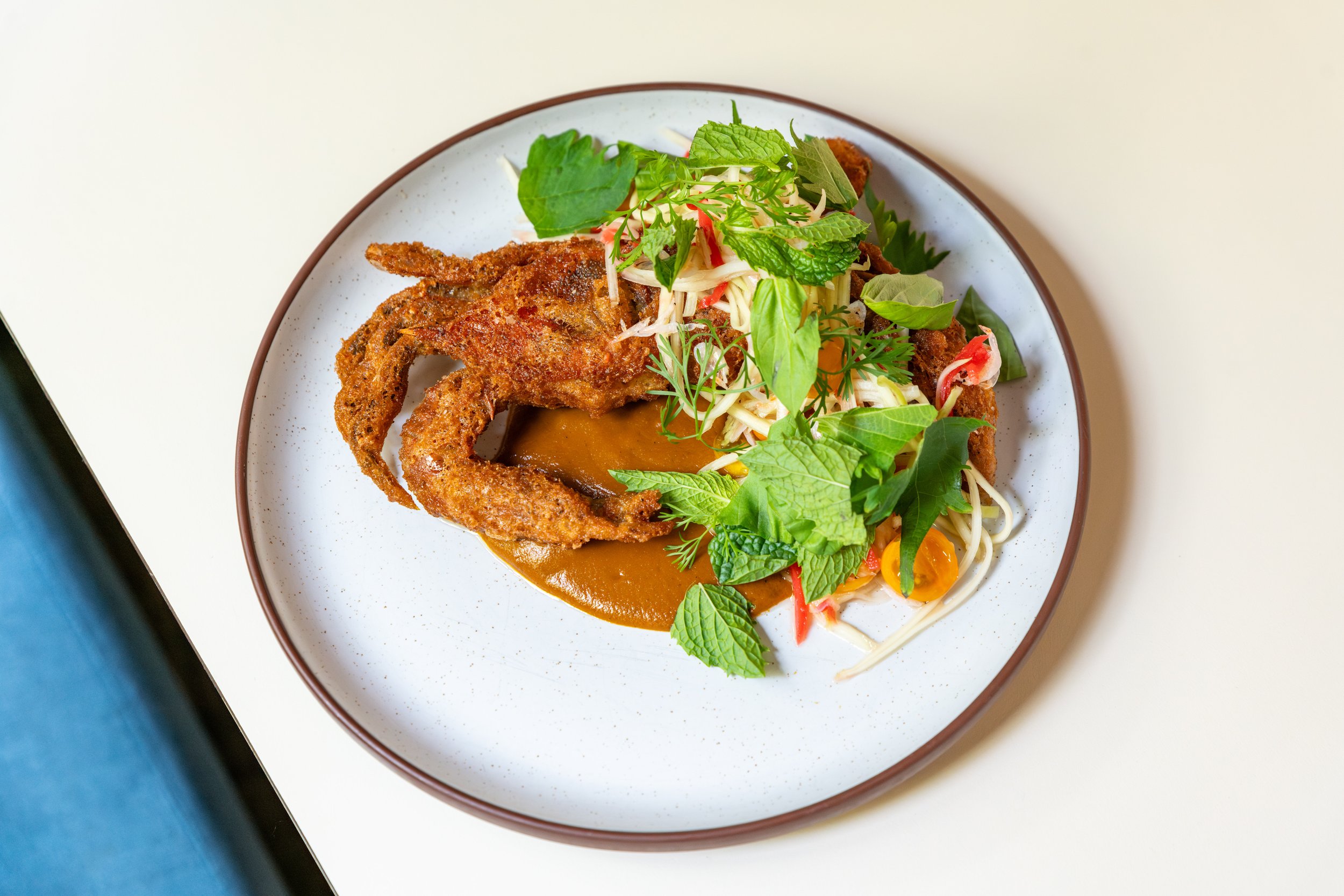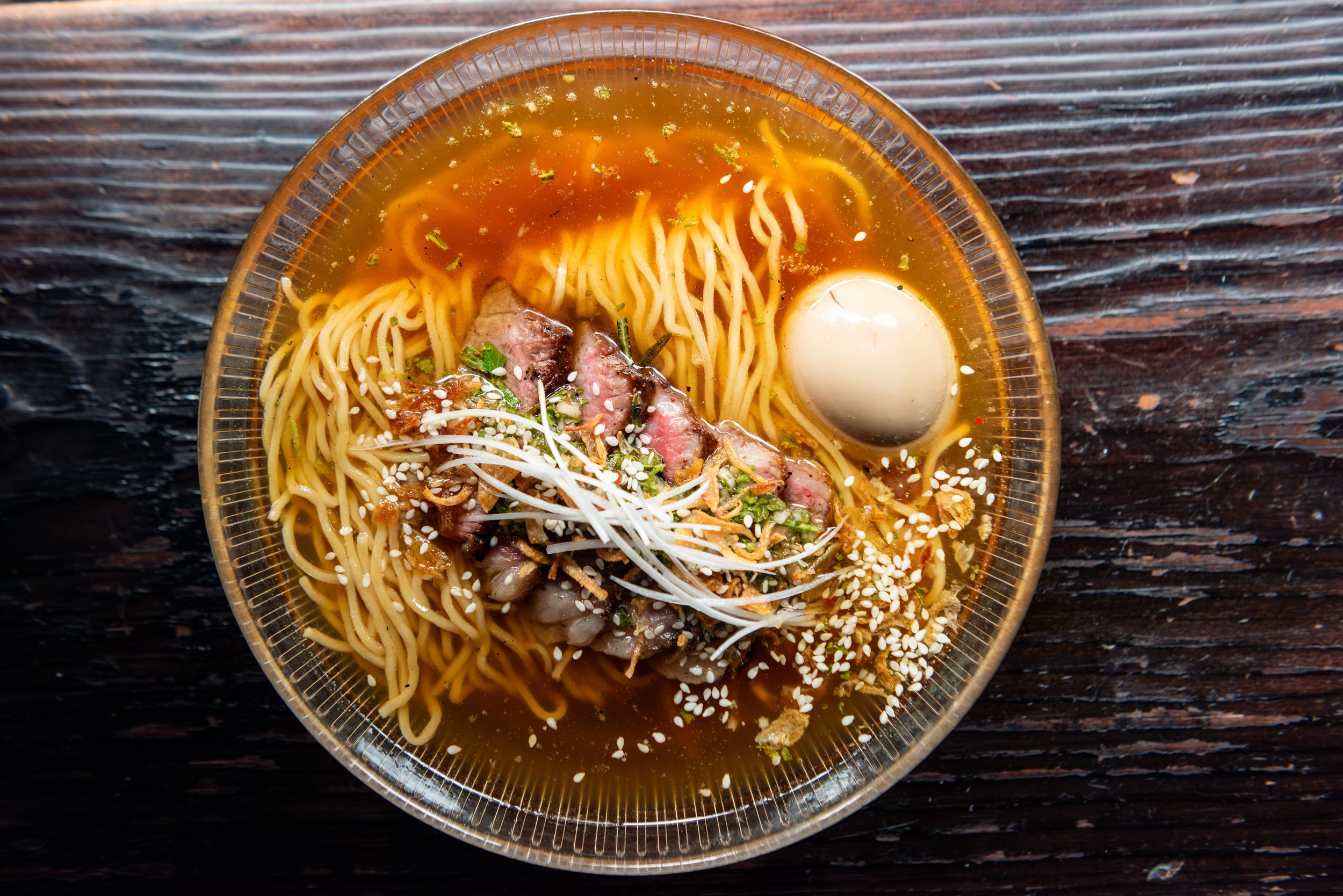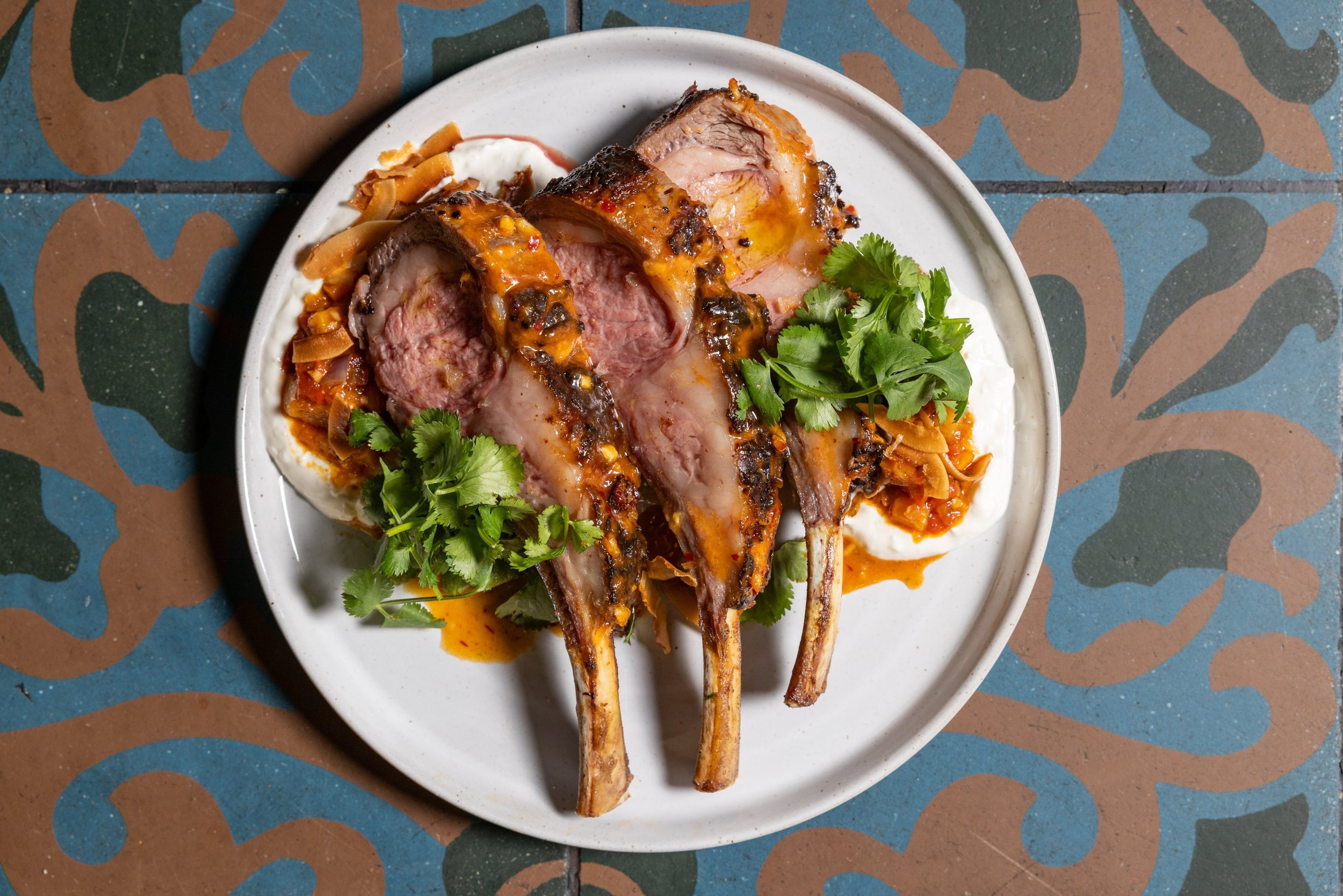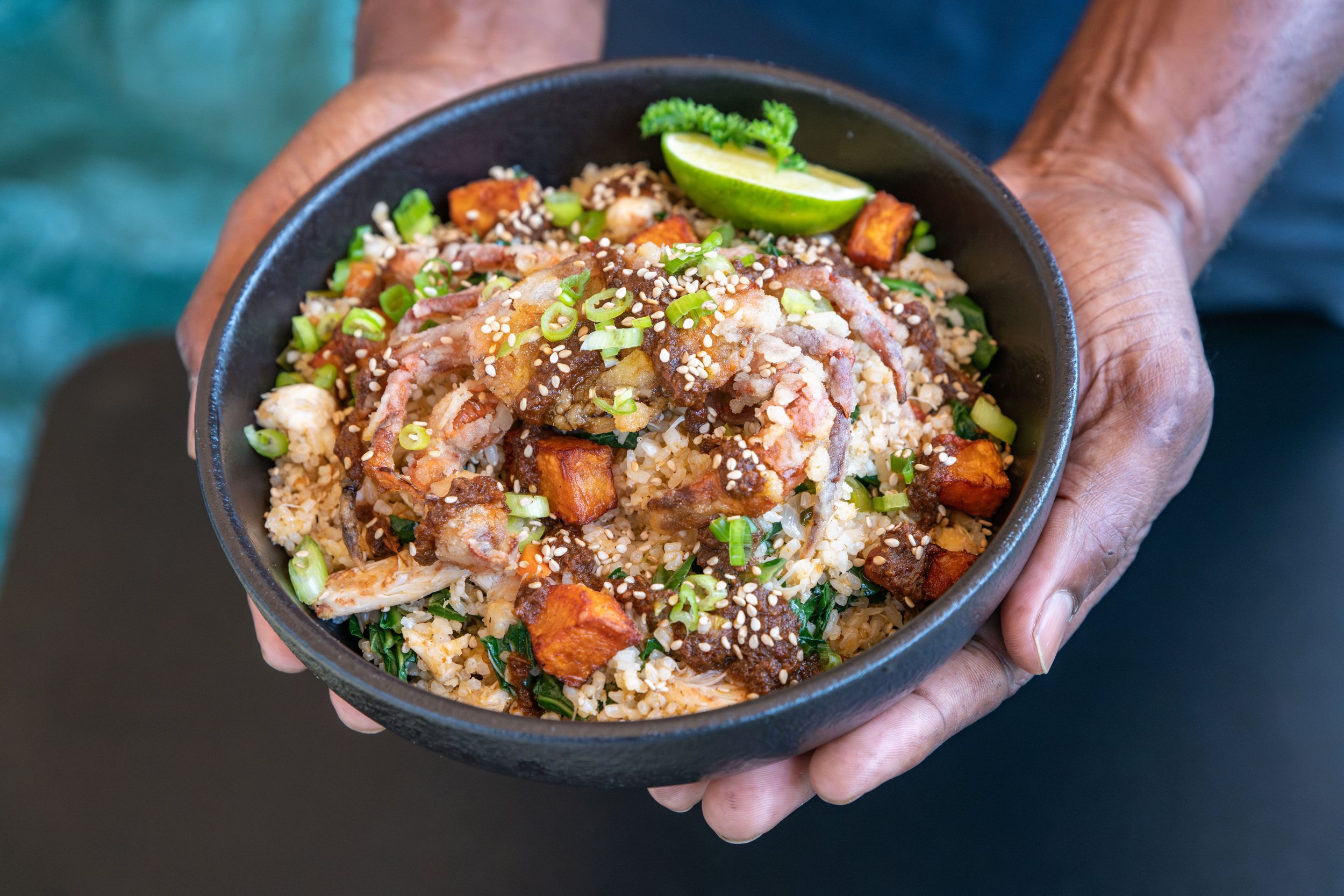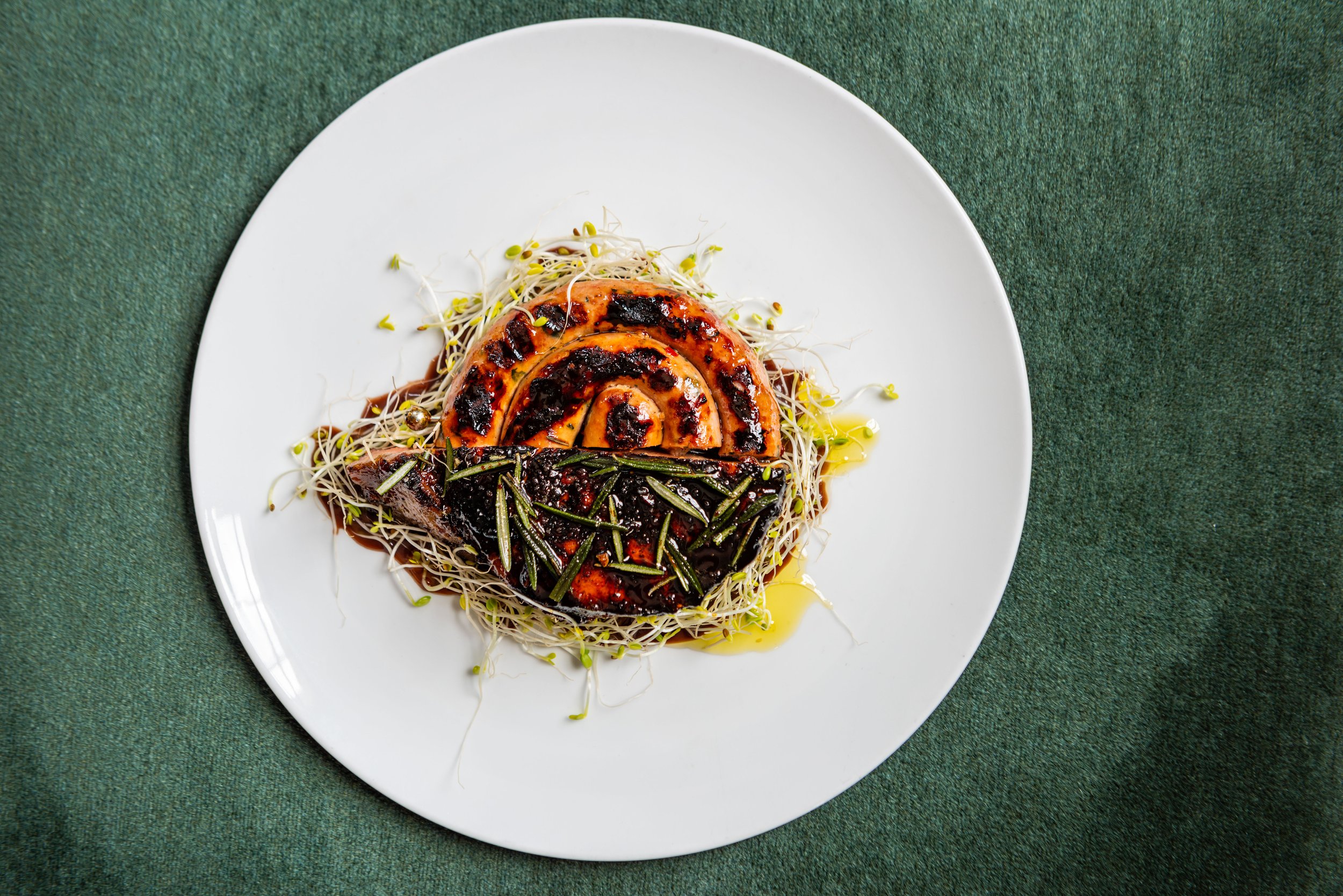The Evolution of Khao
Chefs Donny Sirisavath and Nupohn Inthanousay modernize traditional Lao cuisine in order to get their culture noticed.
Chef Donny Sirisavath is often asked why his food doesn’t stick to tradition.
“I’m continuing the evolution of Lao food,” he answers. But although his Dallas restaurant, Khao Noodle Shop, is located in a city with one of the largest Lao communities in the country, Sirisavath has had a hard time reaching people who don’t know what Lao food is. “Some people lose the ability to create the story because they lose the roots of it. I’ve learned to be okay with doing things differently so I can get my culture noticed.”
For Sirisavath, the evolution of Lao food can be traced through Laotian papaya salad, Tham Mak Hoong. Back in Laos, his grandmother would use a push-and-pull technique to pound shredded green papaya, 10 to 15 bird’s eye chiles, fermented crab paste, sugar, regular fish sauce, and her own batch or padaek (unfiltered fish sauce) in a mortar and pestle, then top it with green veggies and pork rinds.
When Sirisavath’s mother moved to the United States before he was born, she had to adjust her recipe based on local availability. Not often having access to unripe papaya, she would use cucumber or vermicelli noodles with carrots instead. And her personal touch—swapping in fermented whole rice paddy crab and tamarind in place of lime.
Born and raised in Texas with summers spent in Laos, Sirisavath has soaked up the best of both cuisines. “Technique and ingredients are authentic to who you are,” he says, and both Texan and Lao flavors are authentic to who he is.
donny sirisavath’s Papaya Salad: Green Mango, Grapefruit, Caramelized Fish Sauce, and Fried Shallots
Even though Lao ingredients are more available to him than they were to his mother, he still prefers to make use of local ingredients, replacing peanuts with Texas pecans for Khao Noodle Shop’s papaya salad (full recipe here). These types of contemporary additions do not go unnoticed. “The old aunties who come to eat at my shop always have something to say,” says Sirisavath. “I tell them all the time, the American palate is not used to Lao flavors, and while we enjoy the food we cook at home, we have to have a new way of doing things.”
nupohn INTHANOUSAY’s lao sausage
This evolution of Lao food is also a consideration for Goldee’s Barbecue Co-Owner Nupohn Inthanousay. When Inthanousay dipped his toes into the dry-rubbed world of Texas barbecue, he decided that in order to stand out, he would need to lean into his Laotian heritage.
Smoked Lao sausage, with makrut lime, lemongrass, and jeow som has made its way onto the Goldee’s menu, seamlessly settling into their tray of classics (full recipe here).
With Goldee’s barbecue-diehard clientele so in tune with brisket, the Lao sausage serves as a subtle intro to Lao flavors, mimicking the style of his grandmother’s sausage, but adding more garlic and black pepper for a more approachable taste. “I used to be a traditionalist. I didn’t agree with changing the tradition of food, but my mindset has changed,” says Inthanousay. “I think that Lao food needs to evolve. All things that are great need to evolve.”


